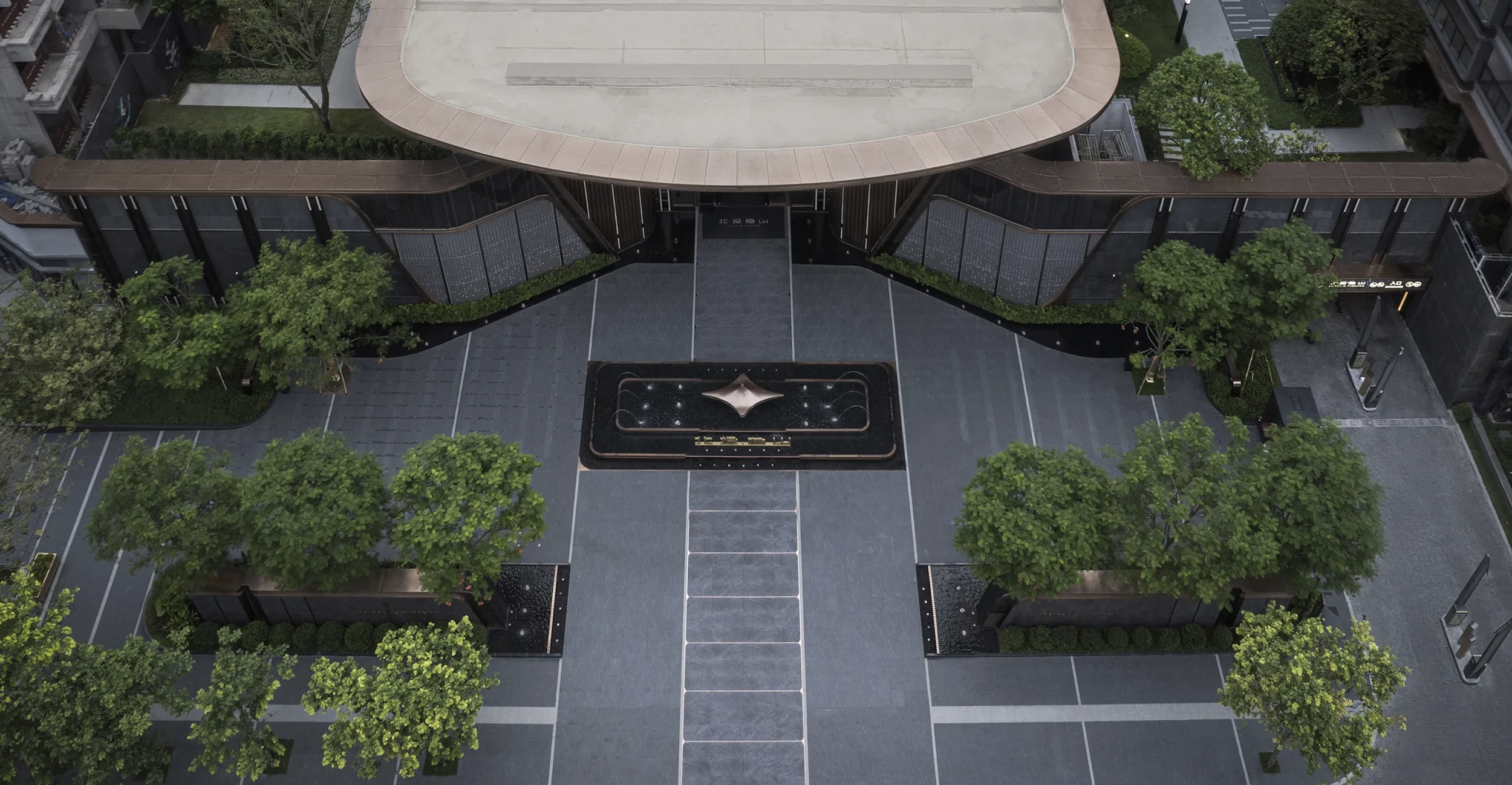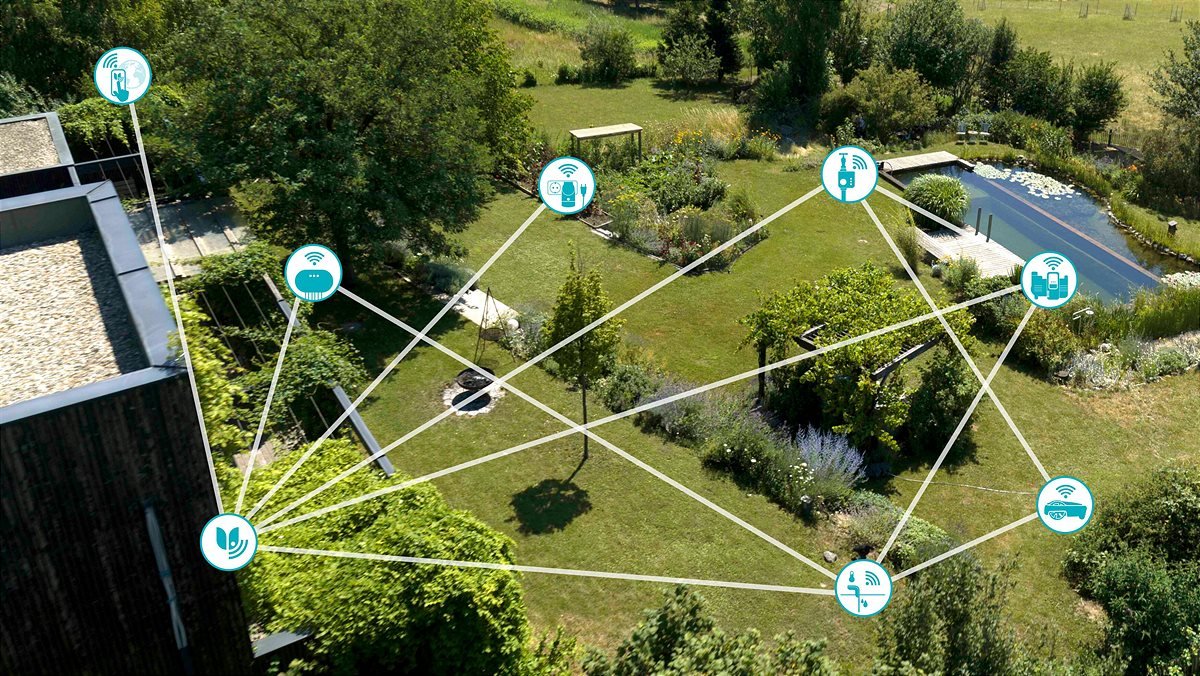The Best Modern Garden Design Concepts
Utilising garden design concepts is crucial for creating cohesive, functional, and visually appealing outdoor spaces that reflect personal style while enhancing the overall experience of nature. Here are the examples of the best Modern Garden Design Concepts to inspire your next project:
Minimalist Layouts
Designed by Nilufer Danis Studio
A minimalist garden focuses on simplicity, clean lines, and the intentional use of space, making it both stylish and practical for modern lifestyles. By limiting the palette of materials and plants used, minimalist gardens create a sense of harmony and calm.
The design often relies on foliage forms rather than a diversity of flowers, with structured elements like clipped box or pleached trees adding visual interest. Repetition in planting, such as using a single type of ornamental grass or a consistent combination of plants, brings cohesion and tranquillity.
Furniture and accessories should be simple, functional, and made from durable materials like stainless steel, wood, or concrete, aligning with the clean lines of the design. It is better to use fewer pieces, focusing on comfort and blending the accessories seamlessly with the natural surroundings to maintain a serene, uncluttered look.
Less is more, and each element in the space is carefully chosen to enhance the tranquillity of the space.
2. Sustainable Approach
Designed by Nilufer Danis Studio
A modern garden can be made sustainable by incorporating eco-friendly practices and materials that reduce its environmental impact while maintaining an appealing design.
This includes using permeable paving to manage rainwater runoff, native or drought-tolerant plants to minimise water consumption, and solar-powered lighting to reduce energy use. Recycled or reclaimed materials, such as salvaged wood or stone, can be integrated into hardscaping for both aesthetic and environmental benefits. Additionally, rainwater harvesting systems and composting help to conserve resources and promote a self-sustaining ecosystem, ensuring that the garden remains both stylish and ecologically responsible.
These sustainable choices not only benefit the environment but also create a harmonious connection between the garden and its natural surroundings.
3. Outdoor Functional Areas
Designed by Nilufer Danis Studio
Outdoor living spaces in modern gardens are designed to seamlessly extend the functionality and comfort of indoor areas into the outdoors. These spaces often include features like dining areas, lounges, and even outdoor kitchens, all equipped with stylish, weather-resistant furniture that complements the minimalist aesthetic chosen for the garden.
Clean lines, neutral colours, and natural materials like wood, stone, or metal are typically used to create a cohesive, contemporary feel. Shade structures like pergolas, along with integrated lighting and heating elements such as firepits, ensure these areas are functional throughout the year.
Thoughtful layout and zoning maximize the functionality of the garden, creating versatile spaces for relaxation, socialising, and entertaining.
4. Water Feature
Chengdu Dowell · Yin Yangtze River by JTL Studio
Water features in modern gardens aren’t just decorative; they bring tranquillity and movement to the space.
Designs often include minimalist elements like cascading wall fountains, sleek linear pools, or water sculptures that use materials such as black granite, corten steel, or smooth stone to complement a contemporary garden aesthetic. These features not only serve as striking focal points but also create a soothing ambiance, softening hardscape elements and adding calm to the environment.
Water features are often positioned to reflect surrounding architecture or greenery, and incorporating eco-friendly solutions like solar-powered pumps ensures sustainability while reducing energy consumption. Additionally, the gentle sound of flowing water helps to mask unwanted urban noise, creating a serene outdoor retreat. Also, consider the scale of any feature relative to the space around it to maintain balance.
5. Vertical Gardening
Designed by Nilufer Danis Studio
Especially useful in smaller spaces, vertical gardening is an inventive way to maximise greenery without expanding the garden’s footprint.
Vertical gardens can be created using structures like trellises, modular green walls, or metal grids, which not only provide support for climbing plants but also contribute to a clean, architectural look. Plants like succulents, ferns, or trailing vines are ideal for vertical gardens, as they require minimal maintenance and offer a range of textures and colours.
Vertical gardens can be used to define spaces, create privacy screens, or feature as living artworks. Vertical gardens can also be used to grow herbs or small vegetables, combining aesthetics with practicality.
Many vertical systems are designed with self-watering features, making them easy to maintain while promoting a modern, space-saving garden design.
6. Art
Designed by Nilufer Danis Studio
In modern gardens, artworks can offer striking focal points that enhance a minimalist design and add personal expression to the outdoor space.
Sculptures, installations, or functional art pieces like decorative benches or water features made from materials such as weathered steel (Corten), metal, or stone are commonly used to complement a sleek, contemporary aesthetic.
Placement is key – art should be positioned where it can create visual impact, often contrasting with the natural elements of a space, such as plants and greenery. The scale and style of the artwork should harmonise with the garden's overall design, ensuring it enhances the space without overwhelming it.
7. Lighting
Designed by Nilufer Danis Studio
Lighting in modern gardens is essential for creating ambiance and extending the garden's usability into the evening.
Key to modern design is the use of minimalist, energy-efficient lighting solutions like low-profile LED strips, recessed ground lights, or solar-powered fixtures that blend seamlessly into the landscape. Consider using soft, adjustable lighting to create a relaxing ambiance and avoid harsh, glaring lights. Uplighting is often used to accentuate architectural plants, sculptures, or water features, while wall-mounted lights can illuminate seating areas or pathways for both safety and aesthetic appeal.
The integration of motion sensors and timers helps to automate lighting, reducing energy use, while colour-changing LED lights offer versatility to create different moods.
Combining various lighting techniques, such as highlighting textures and casting subtle shadows, adds depth and drama, enhancing a modern aesthetic in a garden.
8. Soft Colour Palette with Bold Details
Designed by Nilufer Danis Studio
In modern garden design, a neutral color palette – typically consisting of shades like white, grey, black, and earth tones – creates a calm, sophisticated backdrop that enhances the aesthetic sleekness of a space'.
Bold accents are then strategically introduced through vibrant elements like colorful planters, eye-catching sculptures, vibrant outdoor art, or a single feature wall painted in a contrasting hue. Bold accents can also be achieved with plants that have dramatic foliage or flowers, such as red-leaved Japanese maples or brightly colored perennials, strategically placed to draw attention without overwhelming the minimalist aesthetic.
These accent pieces bring dynamism to the space and can be easily updated as trends or seasons change.
9. Geometric Shapes
Nanning Beitou · Yinshan by A&N Shangyuan Landscape
Geometry has played a significant role in garden design throughout history, from ancient Persian gardens to the parterres of Renaissance Europe and modern landscapes.
Geometric shapes are a hallmark of modern garden design. They bring a sense of order, making spaces feel neat and well-planned.
Pathways, planting beds, and garden layouts can be designed in squares, circles, or triangles, creating an engaging visual flow. For example, a rectangular pool might be aligned with a straight, minimal terrace, while circular planting beds and planters add softness to a linear pathway.
Geometric shapes, such as spheres, blocks, and borders, can define planting beds, direct the eye to focal points, and provide year-round appeal. The repetition of shapes ensures balance and symmetry, giving the garden a cohesive and modern aesthetic.
10. Implementing Smart Features
Photo by Gardena
Integrating technology and smart features into modern gardens enhances both convenience and functionality while helping to maintain a sleek, contemporary design.
Automated irrigation systems ensure efficient water use, while smart lighting allows for customisable ambiance and improved safety, with options to adjust brightness and colour remotely through apps. Solar-powered lights and water features reduce energy consumption, making the garden eco-friendly. Additionally, environmental sensors can monitor soil moisture, temperature, and light levels, helping to optimise plant health.
By integrating these technological elements, a modern garden becomes not only visually appealing but also more efficient, sustainable, and user-friendly, reflecting the ease and sophistication of contemporary design.
By thoughtfully incorporating these modern garden design concepts – ranging from a minimalist layout and sustainable practices to the integration of technology and artistic elements – you can create a stylish, functional, and serene outdoor space that reflects contemporary living. Each element works together to enhance the garden’s aesthetic appeal while ensuring that it is easy to maintain and environmentally responsible, making a garden the perfect retreat to fit today’s lifestyle.











